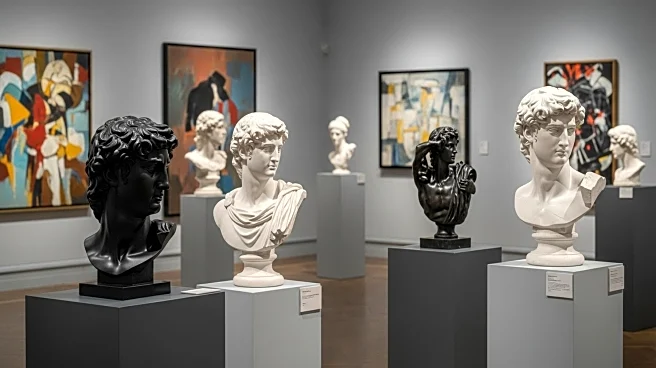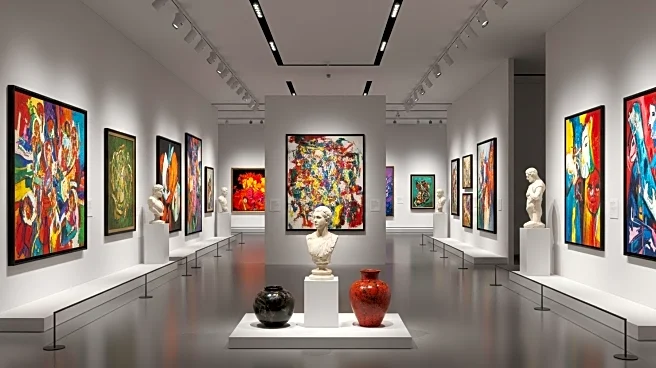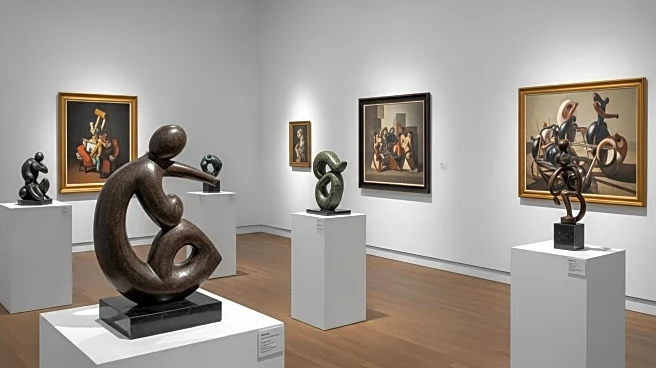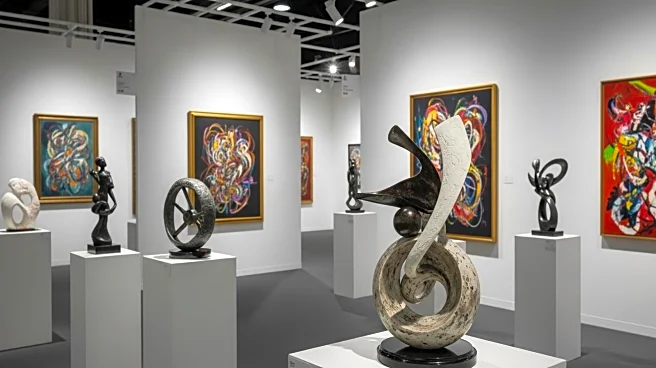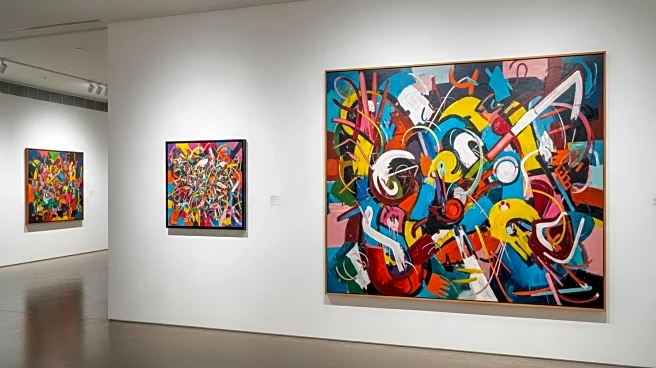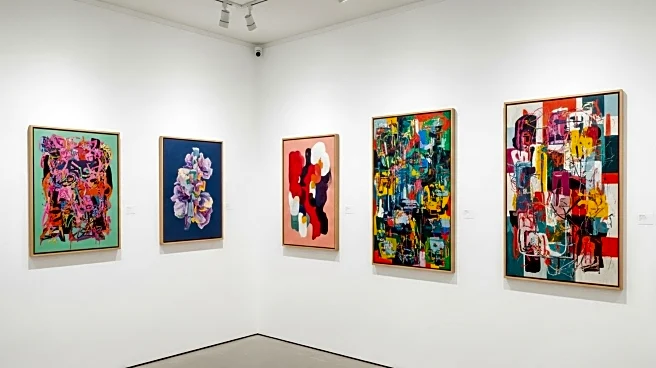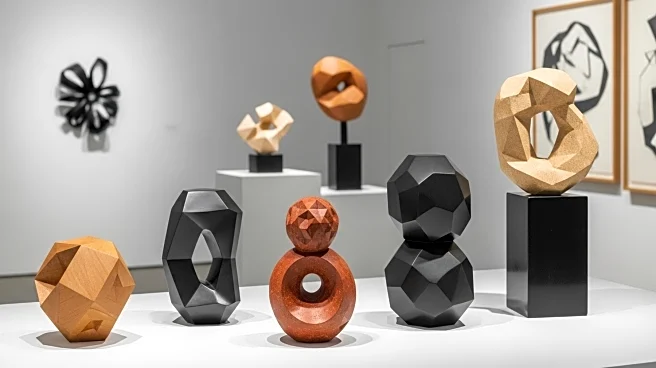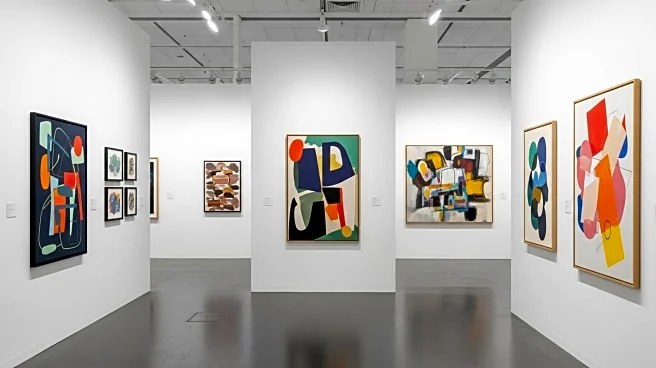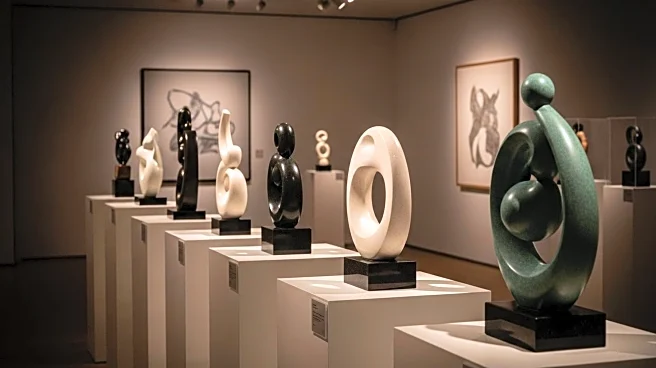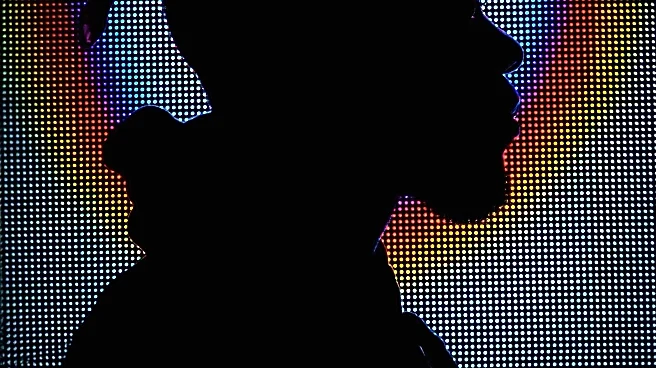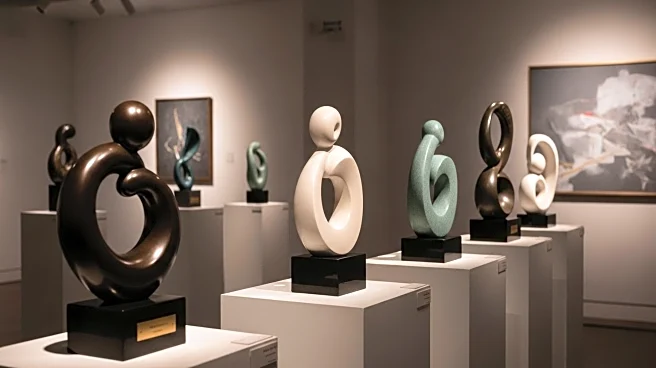What's Happening?
Tony Shafrazi, a prominent figure in the New York art scene since the 1960s, has made a notable return to the art fair circuit after more than a decade. Shafrazi, known for his controversial past and influential role in promoting artists like Keith Haring and Jean-Michel Basquiat, is showcasing works at the Independent 20th Century fair in New York. This marks his first exhibition at a fair since 2012. The exhibition includes works by sculptor Zadik Zadikian, a long-time collaborator, and new artist Brandon Deener. Shafrazi's booth features Zadikian's 'Made in USA,' a column of gilded plaster bricks, and Deener's multi-panel canvases resembling Jiffy baking-mix boxes. Shafrazi's return is seen as a testament to his enduring influence and commitment to art, despite his past controversies, including the infamous 1974 incident where he spray-painted Picasso's 'Guernica.'
Why It's Important?
Shafrazi's return to the art fair scene is significant for several reasons. It highlights the enduring impact of historical figures in the art world and their ability to shape contemporary art markets. Shafrazi's involvement brings attention to both established and emerging artists, potentially influencing market trends and collector interests. His presence at the fair underscores the importance of risk-taking and passion in the art industry, as noted by Elizabeth Dee, the fair's founder. This event also reflects broader trends in the art market, where personal branding and historical narratives can drive interest and sales. Shafrazi's comeback could inspire other veteran dealers to re-engage with the art fair circuit, potentially revitalizing interest in historical art movements and their modern interpretations.
What's Next?
Following his return, Shafrazi may continue to participate in art fairs, potentially expanding his influence and introducing more artists to the market. His collaboration with artists like Zadikian and Deener suggests a focus on blending historical and contemporary art forms, which could attract diverse audiences. The art community will likely watch Shafrazi's next moves closely, as his actions could set precedents for how veteran dealers re-enter the market. Additionally, the success of his current exhibition may encourage other galleries to explore similar collaborations, blending established and new artists to create dynamic presentations.
Beyond the Headlines
Shafrazi's return also raises questions about the role of controversy in art promotion. His past actions, such as the defacement of 'Guernica,' highlight the complex relationship between art, history, and public perception. This event may prompt discussions on how past controversies can be reframed or leveraged in the art world, influencing both market dynamics and cultural narratives. Furthermore, Shafrazi's approach to art as a performative and historical dialogue could inspire new curatorial practices that emphasize storytelling and personal connections to art.
